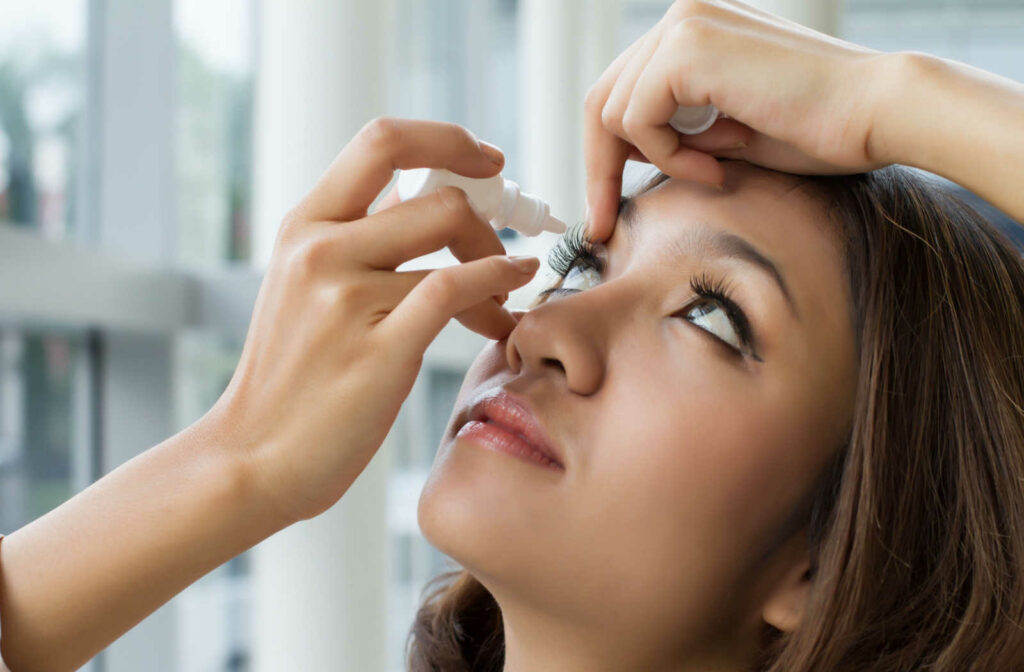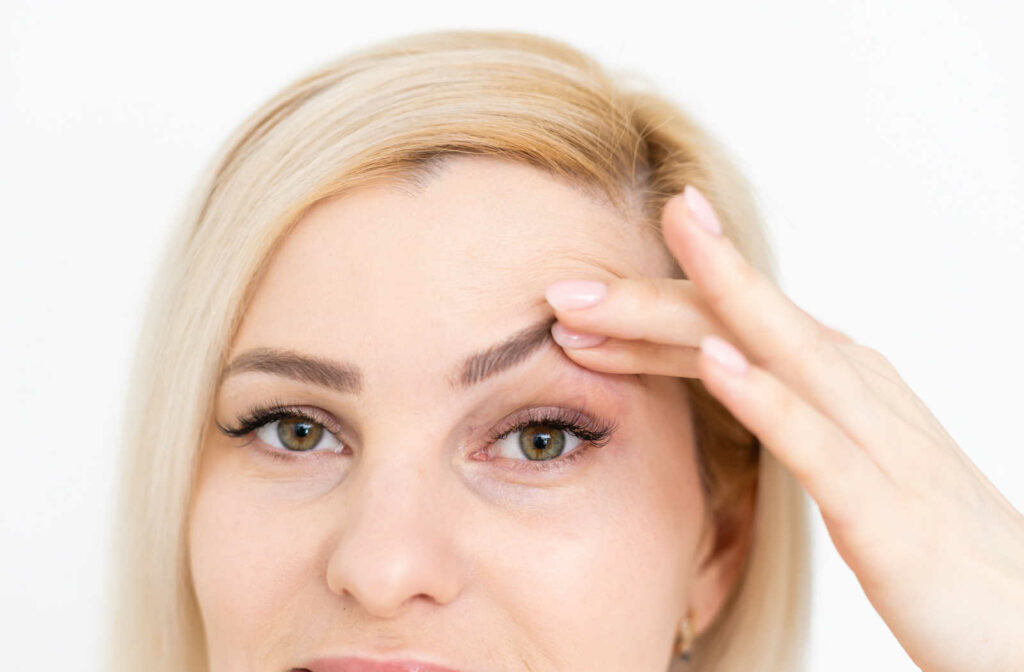Droopy eyelid, medically known as ptosis, is a condition where one or both upper eyelids sag lower than usual. While it is more common with aging due to weakened eyelid muscles, it can also result from injury, surgery, or certain medical conditions.
When to Seek Treatment
- For many, droopy eyelids are primarily a cosmetic concern and do not require medical treatment.
- However, in severe cases, ptosis can obstruct vision, affecting daily activities. If your eyelid drooping is blocking your sight or causing discomfort, consult an eye doctor for a comprehensive exam.
Treatment Options for Droopy Eyelids
- The treatment plan depends on the underlying cause and the severity of the drooping.
- Prescription Eye Drops: Upneeq, an FDA-approved eye drop, can temporarily lift the upper eyelid by stimulating muscle activity.
- Surgery: In more severe cases, a procedure called blepharoplasty can correct the drooping and improve vision or appearance.
What Are Droopy Eyelids?
Droopy eyelids occur when your upper eyelid sags a little or a lot where it can cover the pupil. Droopy eyelids can:
- Affect one or both eyes.
- Come and go or be permanent.
- Be present at birth, called congenital ptosis.
- Develop later in life, called acquired ptosis.
Causes of Droopy Eyelids
Anyone can get droopy eyelids, but there are different possible causes, such as natural or other conditions:
Aging
As a person ages, the skin and tissues in their face weaken. Eyelids may become droopy from saggy skin and loss of muscle tone. The levator muscles that hold up the eyelid can also stretch over time and cause the eyelid to droop.
Eye Injury
An eye injury, for example, if something or someone hits the eye, can hurt or weaken the levator muscle and result in drooping. An eye injury that can cause droopy eyelids may include wearing contact lenses for many years or excessive eye rubbing.
Eye Surgery
Cataracts, glaucoma, and LASIK surgery can cause droopy eyelids. It’s believed to result from the tools used to hold the eyelid back, leading to the stretching and damage of the eye muscles.
Eyelid swelling from the surgery can also contribute to droopy eyes. It can resolve on its own. If it doesn’t, speak to your eye doctor.
Congenital Ptosis
Babies can be born with one or two droopy eyelids because the muscles that hold up the eyelids don’t develop the right way. Vision on the top part of the eye can be affected, where kids may tilt their heads back to see. In some cases, they can get lazy eyes (amblyopia).
Other causes or risk factors for droopy eyelids include:
- A nerve injury
- Temporary stye
- Myasthenia gravis
- Horner syndrome
- Eyelid tumor
- Stroke
- Age
Symptoms of Droopy Eyelids
When a person has droopy eyelids, the main symptom is eyelid sagging in one or both eyes. The eyelid droop can go unnoticed or cause no pain. Other times you can experience the following symptoms:
- Dry or watery eyes
- The face looks tired or weary
- Aching
- Blurry vision
- Tilting the head back or lifting the chin to see
- Migraine headaches
- Arch the eyebrows to lift the eyelids
To diagnose droopy eyes, your eye doctor will conduct an eye exam. During this time, they will ask about your symptoms, check your medical history, and run some tests to measure your muscle strength.
Treatment for Droopy Eyelids
Droopy eyes can sometimes resolve on their own or need medical intervention. The cause and severity of the condition will determine the best form of treatment.
If the cause is an underlying condition, treatment should typically stop the drooping. For children, your eye doctor will monitor their eyes and treat amblyopia if present.
In adults, if your droopy eyelid is from aging, you may opt for surgery to remove extra skin and tuck the muscle that lifts the eyelid.

Eye Drops for Droopy Eyelid
If you’re not a candidate for surgery, you can treat droopy eyes with eye drops. However, these are not over-the-counter eye drops you can purchase. You will need a prescription from your eye doctor for a special type of eye drop. One of which is upneeq. Upneeq is a prescription eye drop and the first FDA-approved drug to treat droopy eyelids.
Upneeq contains an active ingredient called oxymetazoline. These eye drops contract the muscle responsible for lifting the eyelid, allowing it to open 1-2 millimeters more than it could before treatment.
One drop daily of Upneeq can be effective for at least 6 hours, temporarily improving the appearance of drooping eyelids. Mild side effects (in 1-5% of patients in a clinical trial) of using Upneeq include:
- Dry eye
- Eye irritation
- Redness
- Blurred vision
- Headache
Other Ways to Treat Droopy Eyelid
Radiofrequency treatment for an eyelid lift, such as TempSure Envi, stimulates the body’s collagen production. When gentle radiofrequency heats the skin, it triggers the body’s natural collagen growth in the treated area. It can help to tighten mild to moderately loose eyelid skin.
Non-Surgical Treatments for Droopy Eyelid
Usually, droopy eyelids don’t affect your health, but they can block your vision or have a serious underlying condition. Besides surgery, treatment options can include Upneeq eyedrops and radiofrequency.
If droopy eyelids impact your daily life, schedule an appointment with the optometrists at Bluebird Vision + Wellness to find the best treatment options for your needs.




